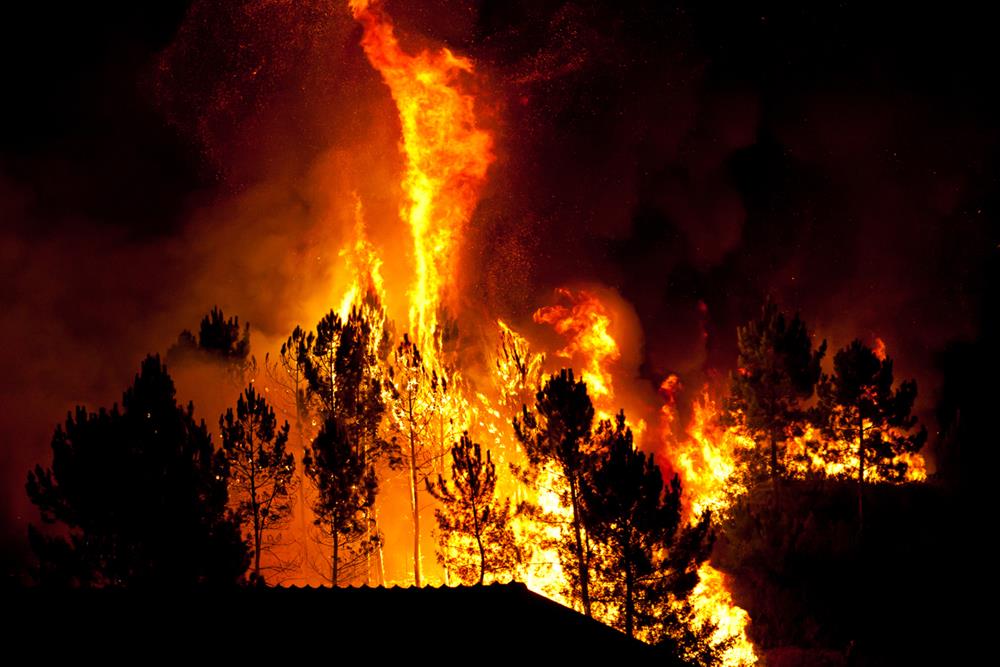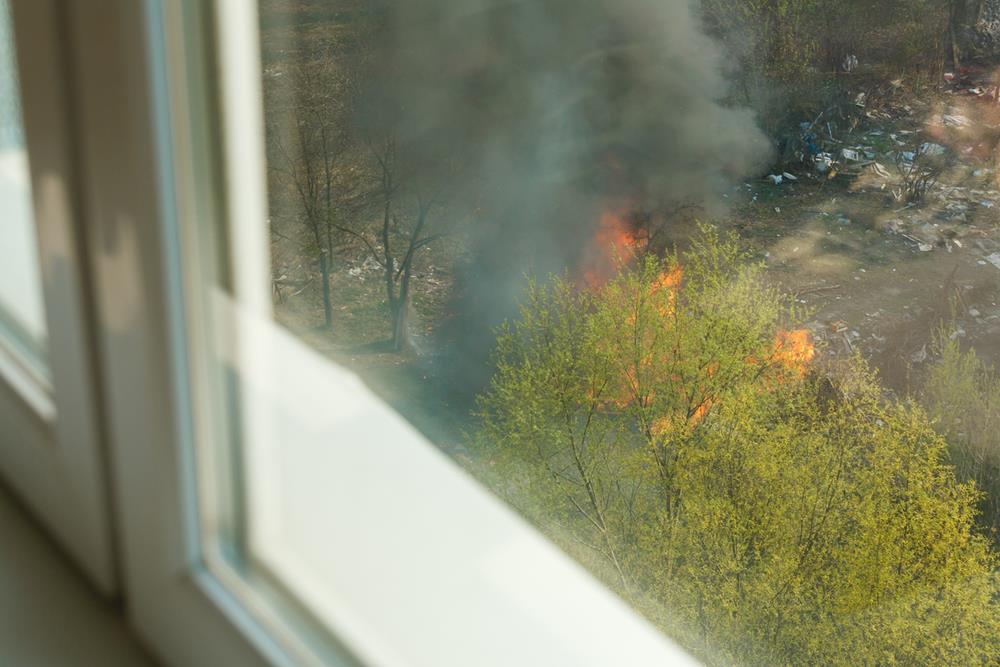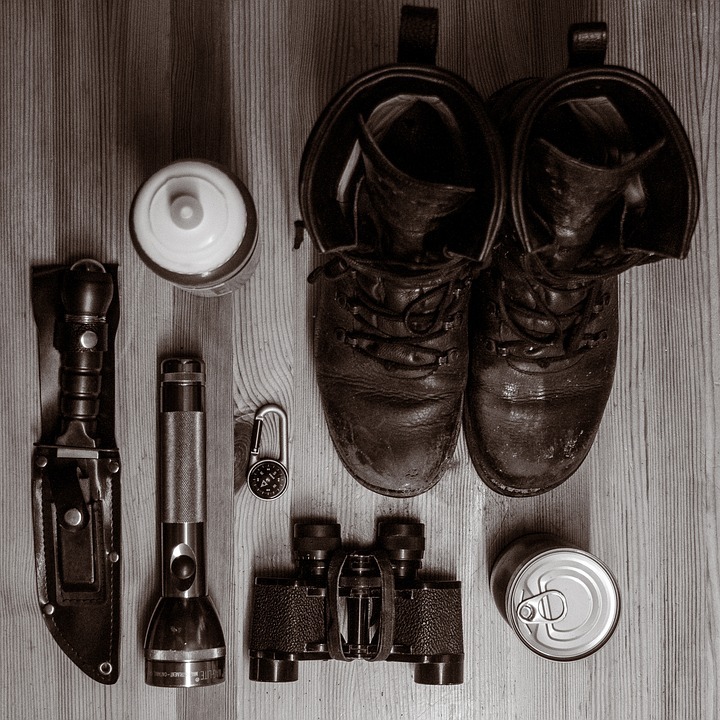What to Do If You’re Trapped in a Wildfire: Last-Resort Survival Strategies

Getting caught in a wildfire is a terrifying situation no one wants to face—but it can happen. Sometimes, fires move faster than expected, escape routes become blocked, or evacuation notices come too late. When you're surrounded by smoke and flames, knowing what to do in those critical moments could mean the difference between life and death.
In this article, you’ll learn last-resort survival strategies designed for when evacuation isn’t an option. we’ll walk you through practical, potentially life-saving actions you can take when you're out of time and options.
| Category | Survival Strategies |
|---|---|
| Understanding Wildfire Behavior | - Fire moves quickly: up to 20 mph in grasslands, 6 mph in forests. - Avoid fleeing uphill; fire spreads faster on slopes. - Be aware of wind shifts and spot fires caused by embers. - Use firebreaks like roads or rivers as temporary shelter. - Use infrared tools to navigate through smoke and darkness. |
| Mental Preparedness | - Stay calm and focused to improve decision-making. - Visualize escape routes and practice breathing control. - Familiarize yourself with emergency protocols beforehand. |
| Identifying Safe Zones | - Choose sturdy, fire-resistant buildings with sealed windows/doors. - Outdoors, seek irrigated areas or large water bodies. - In a vehicle, park away from vegetation; stay inside. - Use wet towels to block smoke; check for hazards after the fire passes. |
| Personal Protection | - Stay indoors or in protected areas away from the fire front. - Wear long sleeves, boots, and goggles. - Stay low to the ground to avoid smoke inhalation. - Extinguish spot fires and check for embers after the fire. |
| Surviving in a Vehicle | - Remain inside with windows up and vents closed. - Park in a cleared area, not near vegetation or under trees. - Lie on the floor, cover with natural fiber blankets. - Call 9-1-1 with your location and condition. - Wait for the fire front to pass before exiting. |
| Outdoor Survival | - Use natural firebreaks like roads or streams. - Move downhill, avoid open brush areas. - Shelter in trenches or behind large rocks, covering with dirt or tarp. - Stay aware of flash flood risk in low areas post-fire. |
| After the Fire Passes | - Exit shelter only when safe; watch for embers and debris. - Wear gloves and thick boots during damage inspection. - Avoid power lines and assume they are live. - Document damage and begin cleanup cautiously. |
| Post-Fire Safety | - Avoid hot ash, smoldering debris, and ash pits. - Continue wearing protective gear. - Stay alert for changing conditions and reignition risks. |
| Maintaining a Fire Watch | - Monitor for smoke, heat, or new flames. - Inspect doors and areas for heat before opening. - Report hazards immediately with clear location info. - Stay alert and proactive to prevent flare-ups. |
Understanding Wildfire Behavior
When caught in or near a wildfire, knowing how fires behave can significantly increase your chances of survival. Wildfires are fast-moving, intense, and influenced by multiple environmental factors that can change rapidly.
1. Speed and Spread
Wildfires can move up to 20 miles per hour in dry grasslands and around 6 miles per hour in dense forests. That means flames can cover the length of a football field in under a minute. You cannot outrun a wildfire—instead, your focus should be on making smart, informed moves based on terrain and fire behavior.
2. Terrain and Elevation
Fire travels faster uphill due to rising heat and preheating of vegetation above. If possible, avoid fleeing uphill. Instead, look for lower ground or flat terrain when planning your escape route.
3. Wind Influence and Spot Fires
Wind is one of the most powerful drivers of wildfire movement. It can shift direction quickly, causing unpredictable fire behavior and spot fires—small fires ignited by embers far ahead of the main blaze. Stay alert for wind shifts and embers landing in your vicinity.
4. Natural Firebreaks
Look for firebreaks like paved roads, rock outcroppings, rivers, or cleared fields. These can serve as barriers to slow a fire’s spread or even as temporary safe zones when no other shelter is available.
5. Low-Visibility Navigation
In low-light or smoke-filled conditions, visibility can be near zero. Using tools with infrared capabilities can help detect heat sources and navigate more effectively in the dark, especially if you’re trying to find shelter or a safe path at night.
By understanding how wildfires behave and how different environmental elements influence their movement, you can make quicker, smarter decisions in life-threatening situations. Constant awareness of your surroundings is your best defense.
Preparing Mentally for the Situation

Having a grasp on wildfire behavior is only part of the equation; preparing mentally for the situation is just as essential. Recognize the unpredictability of wildfires and stay calm amidst chaos.
Rapid fire spread, sometimes reaching speeds of 20 mph, demands quick thinking and focus. Visualize potential escape routes in advance to reduce panic and improve decision-making. Practice mindfulness techniques like controlled breathing to maintain composure and clear thinking.
This mental preparation guarantees better responses during emergencies. Familiarize yourself with emergency protocols and survival strategies to build confidence. This preparation allows you to act decisively in high-stress scenarios, greatly enhancing your survival chances.
Identifying Safe Zones and Shelters
Identifying safe zones and shelters is crucial when you're facing a wildfire. Prioritize well-constructed buildings with minimal combustible materials. Verify all windows and doors are shut, sealing them with wet towels to block smoke.
If you're outdoors, seek irrigated pastures, golf courses, or large ponds, as they offer reduced fire risk and water access. Trapped in a vehicle? Park away from vegetation. Use natural features like boulders for protection, and keep windows closed with the air conditioning on recirculation.
In residential areas, move to the farthest point from the fire front, and extinguish spot fires caused by embers. During such emergencies, documenting essential information on paper can be invaluable for effective communication and coordination.
After the fire passes, check for spot fires and downed electrical wires, treating them as energized until they're deemed safe.
Personal Protection Measures During a Wildfire

While facing the threat of a wildfire, it’s vital to focus on personal protection to guarantee your safety.
One of the significant personal protection measures during a wildfire is staying inside a well-constructed building. Close all windows and doors, and use wet towels to seal gaps, preventing smoke infiltration. Protect yourself by wearing long sleeves, heavy boots, and goggles to shield against heat and embers.
Move to the farthest area from the fire front, staying low to avoid smoke inhalation. Extinguish any spot fires caused by embers inside. After the fire passes, carefully exit to an area without flames.
Fire prevention includes checking for hidden embers or spot fires around you, ensuring your surroundings are safe from potential hazards.
Surviving in a Vehicle Surrounded by Fire
Being trapped in a vehicle during a wildfire is an extremely dangerous situation—but staying calm and taking the right steps can greatly improve your chances of survival.
1. Stay Inside the Vehicle
Do not attempt to run through flames or abandon your car unless you have a clear and immediate escape route. A vehicle, though not fireproof, can offer a level of protection against radiant heat and flying embers.
2. Secure the Cabin
Roll up all windows tightly
Shut off external vents and set the air system to recirculate to reduce smoke inhalation
Turn off the engine to avoid sparking or drawing in smoke
3. Choose a Safe Parking Spot
Pull off the road into a cleared area away from vegetation
Avoid stopping under trees or near brush that could ignite
Park on bare ground or gravel if possible, not dry grass
4. Protect Yourself from Heat and Smoke
Lie down on the floor of the car, which is the lowest and safest point
Use a wool or cotton blanket, jacket, or any natural fiber covering to shield yourself from radiant heat
Avoid synthetic materials—they can melt under high heat
5. Call for Help
Dial 9-1-1 and provide your exact location (GPS if possible), the direction of the fire, and your condition. Emergency services may be able to reach you or provide instructions.
6. Wait It Out
Remain in the vehicle until the fire front has passed. Flames typically move fast and may pass within minutes. Exiting during peak heat or flame contact is far more dangerous than staying inside.
These steps can make a life-or-death difference when every second counts. Preparation, quick thinking, and remaining inside the vehicle until it is safe are critical in a wildfire entrapment situation.
Strategies for Outdoor Safety
When facing the harsh reality of being trapped outdoors during a wildfire, your survival hinges on quick thinking and smart decisions.
Initially, act as your own fire watch by constantly evaluating your surroundings. Seek natural firebreaks like roads or bodies of water to enhance your safety. Move downhill and away from higher elevations since flames climb uphill quickly.
If escape routes are blocked, find a deep gully or trench and cover yourself with dirt or a tarp, ensuring a breathing space. Avoid open areas and small dry brush, as they can worsen fire conditions. Instead, find larger, moisture-rich spots for shelter if possible.
Remember that flooding can occur even away from coastlines, so be cautious of areas that may be susceptible to flash floods after a wildfire.
Immediate Actions After the Fire Passes

Once the wildfire has passed, it’s crucial to remain vigilant and take immediate steps to guarantee your safety.
Carefully exit the building only when you’re confident it’s safe, as lingering embers can reignite the fire. Check the perimeter of your property for spot fires, and extinguish them promptly to prevent further damage.
Wear personal protective clothing like leather gloves and thick-soled boots to safeguard against hazards while evaluating any damage. Steer clear of downed power lines—assume they’re energized and report them to authorities.
Post-Fire Safety and Hazard Awareness

After ensuring immediate safety steps post-wildfire, focus on understanding and exploring the landscape of potential dangers that remain.
It's vital to be aware of these hazards to keep yourself and others safe.
- Avoid hot spots: Steer clear of hot ash and smoldering debris, as they can cause serious burns and hidden fire risks.
- Stay away from power lines: Treat all downed wires as energized. Report these hazards to authorities to prevent accidents.
- Watch for hidden embers: Ash pits can hide embers capable of reigniting. Remain vigilant to these concealed dangers.
- Wear protective gear: Use leather gloves and thick-soled boots when inspecting or clearing debris to reduce injury risks.
Maintaining a Fire Watch and Reporting Hazards
Even though the wildfire has passed, it's crucial to maintain a vigilant fire watch to guarantee safety.
Keep an eye out for smoke, sparks, or hidden embers that could reignite. Inspect your property's perimeter for spot fires and always test doors for heat before opening them to avoid potential flames.
If you see any smoke or fire, report it to local authorities right away, giving precise location details for a quick response. Stay alert to changing conditions since winds can reignite smoldering debris.
When inspecting for hazards, wear gloves and boots to protect yourself from sharp debris or hot spots. Your proactive fire watch efforts can make a significant difference in preventing further damage and ensuring everyone's safety.




